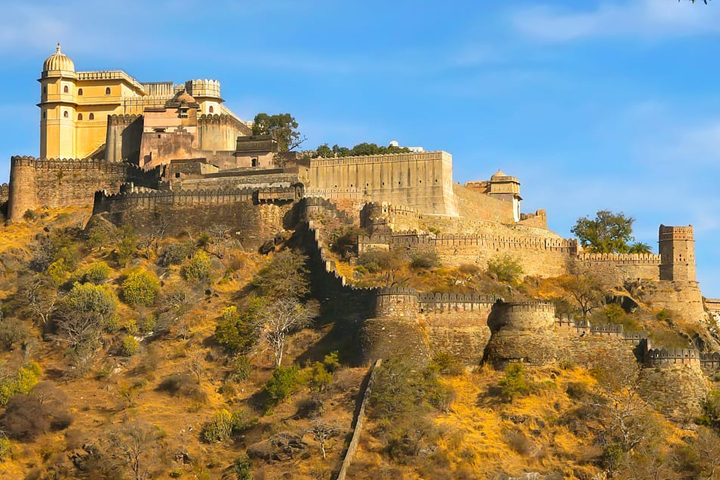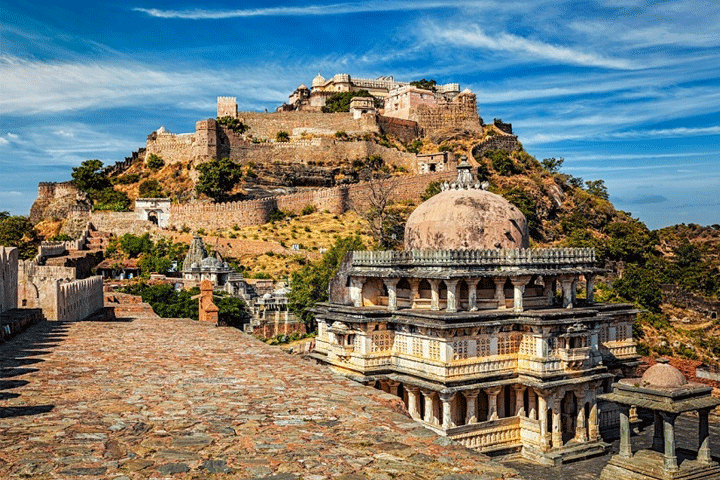With a long history of bravery and nobility, Rajasthan is a place of deserts and extraordinary daring. The Kumbhalgarh Fort, one of the most notable locations in Rajasthan, was constructed by the renowned Maharana Kumbha and is considered to be among the best forts in India. Known as “The Great Wall of India,” this fort is not only Mewar’s pride but also an engineering wonder.
Allow me to start there and show how he reconnected in a flawlessly organised Froms Mewar’s history, as Mewar owes everything as a fighter to Maharana Kumbha’s dates and its affiliates.
Who Built Kumbhalgarh Fort
Naturally, a lot of people wonder, “Who built Kumbhalgarh Fort?” The solution to this question doesn’t have to go very far; instead, it should aim to identify what has been hailed as Maharana Kumbha’s (one of the notable Mewar dynasties’) golden age. The fort is thought to have been constructed in 1443 C.E., somewhere in the fifteenth century. It was the kingdom of Mewar’s main goal.
Although Kumbhalgarh was mainly constructed for defence, Maharana Kumbha had much more in mind for the building; he desired a stronghold that would last for generations and distinctly demonstrate the region’s architectural prowess. Today, people travel from all over the world to visit this UNESCO World Heritage site.
The Great Wall of India: An Architectural Marvel

The massive wall, which is renowned as the Great Wall of India, is the second longest continuous wall in the world and stretches 36 kilometres. The wall and its roof were thick to keep out invading armies, and their width allowed for eight horses to pass through. Maharana Kumbha made some changes to the fort’s design to ensure that it was constructed tactfully even though it was subjected to sophisticated attacks during combat.
Where is Kumbhalgarh?
Kumbhalgarh is located in the Aravalli Hills, almost 85 kilometres from Udaipur. The distance from Udaipur to Kumbhalgarh, which should take roughly two to three hours, is an option for those who would like to visit historical places of Rajasthan. The route is scenic and offers a view of Rajasthan’s natural surroundings, which contributes to the enjoyment of the journey to some degree.
Maharana Kumbha: A Visionary Leader
In addition to being a great builder, Maharana Kumbha was also an able warrior and a great tactician. His war endeavours helped Mewar by expanding the kingdom’s territory, and his administrative priorities created a stable kingdom structure. In addition to Kumbhalgarh, he restored numerous other forts so that Mewar would not be threatened from the outside. During his reign, literature and music flourished, earning him the nickname “schooled” king. This Maharana was not just the man who constructed Kumbhalgarh Fort and other forts; he also recorded a glorious chapter in the history of Mewar.
In times of conflict, both kings and common people might take refuge there. Most notably, it was the home of Maharana Pratap, one of Mewar’s most well-known warriors when he was younger. In several respects, Maharana Kumbha was a visionary, as building such a powerful stronghold was essential to maintaining Mewar’s independence and legacy.
Because the fort was perched atop a hill at 1,100 meters above sea level, the men could see any enemy advance coming from any direction. With palaces, temples, and step wells, its civil architecture was a flawless fusion of form and function.
Legacy of Maharana Kumbha

The magnificent Kumbhalgarh Fort and Maharana Kumbha His bravery, sagacity, and authority extend well beyond the fortress. Additionally, he left behind a style of architecture, art, and governance that was difficult for his successors to imitate. He is regarded as the mythical king of Rajasthan due to his significant contributions to the fields of fortification, cultural, social, and strategic growth.
Kumbhalgarh Fort is still standing today as a result of his vision and diligence. Along with tourists interested in Rajasthan’s rich past, it also naturally attracts architects and history buffs.
The Kumbhalgarh fort is considered to be among the wonders of the world in Indian history. Based on its structure, location, the Great Wall of India, and history, the fort reflects the pride, power, and inventiveness of the Mewar era.
Whether you’re a history buff or a traveler seeking to unravel the mysteries of the past, a visit to Kumbhalgarh is a journey through time. And with its proximity to Udaipur, the Udaipur to Kumbhalgarh distance makes it an accessible and enriching destination.
As you stand atop the fort and gaze at the endless stretch of the Great Wall of India, you’ll not only admire the genius of Maharana Kumbha but also feel the enduring legacy of Mewar’s indomitable spirit.




